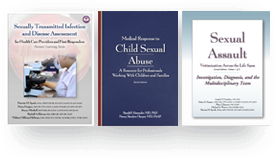Pediatric Abusive Head Trauma Pocket Atlas
Volume 2: Medical Mimics
Pediatric Abusive Head Trauma, Volume 2: Medical Mimics provides in-depth guidelines for the diagnosis of injuries resembling abusive head trauma in children. It covers the differential diagnoses that may be confused with abusive head trauma, such as birth trauma, metabolic disorders, autoimmune conditions, oncologic mimics, and infectious diseases.
This atlas serves as a crucial reference for medical and legal investigations of possible abusive head trauma cases. With its inclusion of full-color radiologic images and photos taken during physical examinations, this text is an ideal reference for medical practitioners who work with children. In cases of abuse, it will serve as a guideline for ruling out alternative possibilities and commencing the trial and treatment of child abuse cases.
Features & Benefits:
- 60 high-quality radiographic images and photos
- Detailed exploration of conditions that mimic abusive injury
- Compact and lightweight for on-the-go use















